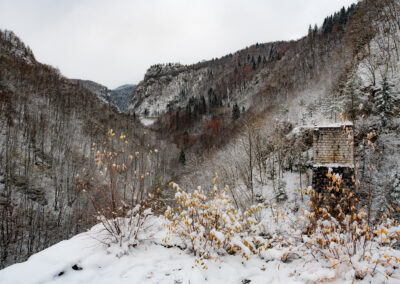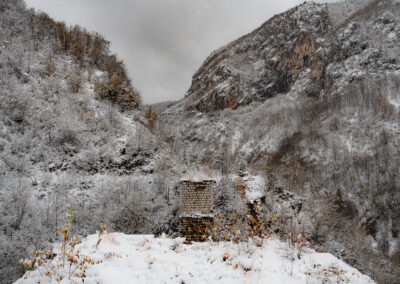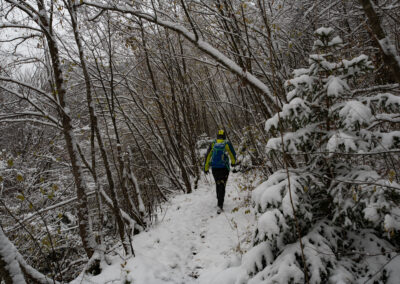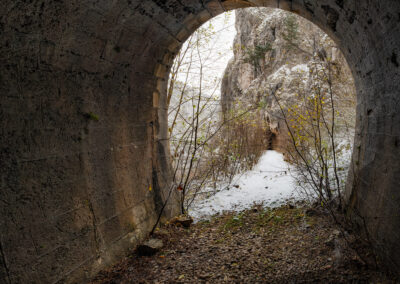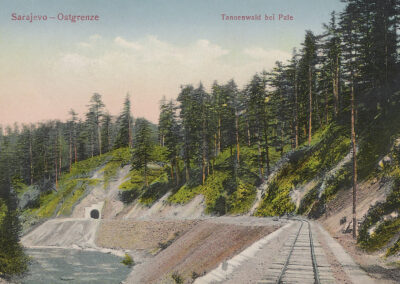A trail to the past – on time, heritage and heirs
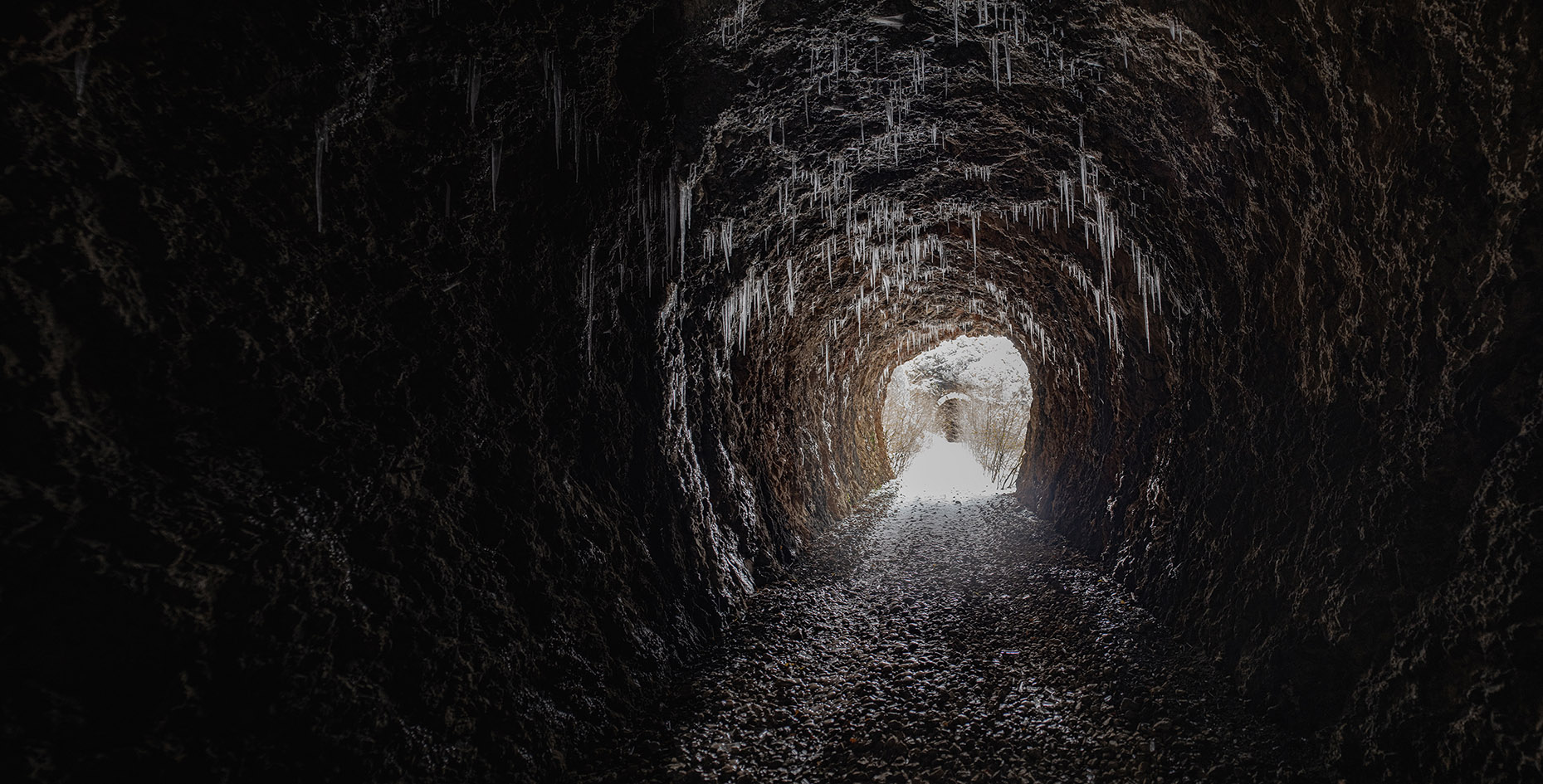
By Tobias Strahl, November 2023. The third tunnel on the track lies hidden in the forest. To me it gives the impression of rather a door, a portal, than a tunnel of a railway which had vanished half a century ago. I catch myself wishing that if we walk through it we will have made a journey to the past, back to the time when this track was built. The »Bosnische Ostbahn« (=Bosnian Eastern Railway) was built by the Austro-Hungarian Empire from 1902 till 1904. It connected Sarajevo with Uvac (today Rudo) at the Serbian Border. From Most na Drini, a turn-off lead to Vardište. The gauge of the railroad was 760 mm only (a standard gauge line of 1435 mm was considered too expensive back then). At its peak between World War I and World War II the »Ćiro« – as the locals affectionately call the narrow-gauge railway still today – connected Belgrade with the Adriatic Coast, including in its network of altogether 1500 kilometer railway lines such as Sarajevo-Ploče (Narenta railway), Sarajevo-Višegrad (and from there on to Priboj in Serbia) and Ustiprača-Foča. However, in the second half of the 20th century a new era began. A standard gauge railway was built along the valleys of the Bosna and the Neretva, connecting Zagreb with Sarajevo, Mostar and Ploče at the Adriatic Coast; people bought new fancy cars and an extensive network of buss connections made the small train look out of date. In the 1970s the »Ćiro« finally ceased operation.

Somehow my wish becomes reality, the illusion works quite well – we are succeeding with our journey to the past. It is quite, silence covers everything, the fresh snow which fell all throughout the night before dampens all noise. Later on, after we have passed the first and the second tunnel, the steady murmur of the Miljacka River drowns our footsteps. We rarely speak. Everyone in our group of three follows his own thoughts. The numerous pitch black tunnels and two half-ruined viaducts are a real challenge, especially during the winter. Rotten railway sleepers, covered in snow and ice, some of which are missing, are the only support on the more than one hundred metre long bridges, from which there is certainly a twenty metre drop. Certainly, the trail from Sarajevo to Pale along the abandoned railway lines of the »Ćiro« is recommended for experienced hikers only – especially during winter. We as a group are roaming the Bosnian mountains for more than three years now. At the difficult parts of the track we help each other as best as we can.
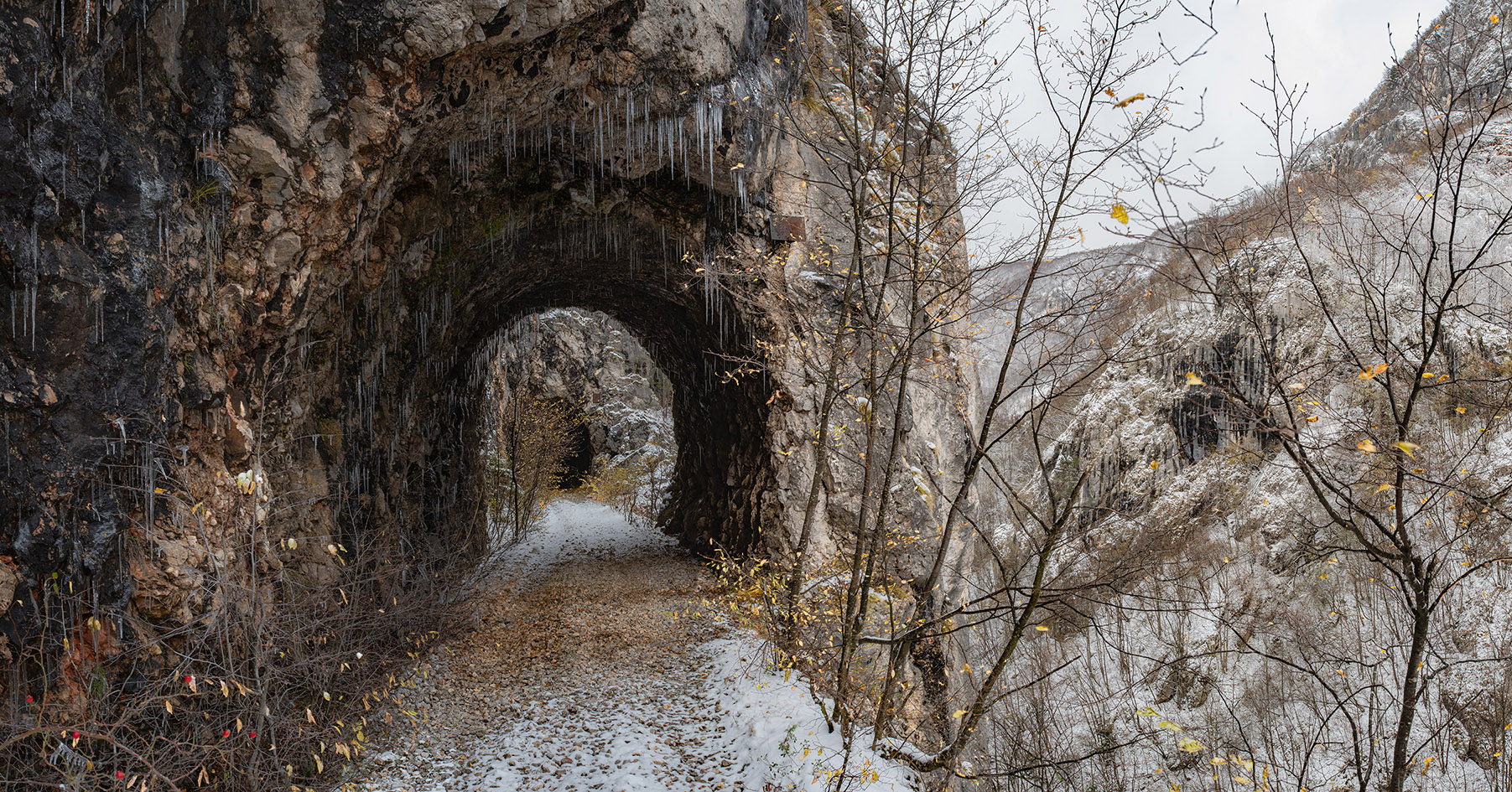
The abandoned line of the »Ćiro« is surely a heritage that lacks heirs so far. It is strange, mythical, almost magical how it lies overgrown and nearly forgotten in the Miljacka gorge. Nevertheless, it is causing a murmur among the local population that is becoming increasingly audible. More and more people follow the 13 kilometer long trail every summer from Sarajevo to Pale, from where one can take a Bus back to Sarajevo for only four Konvertible Marks (~2 €). Just recently the old railway station in Bistrik, Sarajevo has been renovated according to all the rules and best practises of monument preservation. It hosts now a pretty good Turkish Coffee House. It doesn’t take much imagination to realise the enormous tourist potential of the old railway line. Properly restored, featuring a walk and a bicycle track alike, with trees and bushes cut back, it’s viaducts restored and fitted with railings, the tunnels well lit and finally one or two small restaurants or kiosks along the way, thousands will dwell along the trail from spring to autumn. For the development of the city of Sarajevo and its surrounding area and for the benefit of the inhabitants of Bosnia that seems a desirable future. However, cranky time travellers like me will regret this. An inheritance without heirs can – at least for a while – be taken over by anyone’s imagination. And that’s all I want to be: »anyone« and »for a while«. A passer-by in search of something I don’t yet know. Such people will enjoy the abandoned »Ćiro« railway as long as it appears as it does now (don’t take too long to visit!) – while wishing the Bosnians all the prosperity and wealth one can imagine. As the pain change causes sometimes is the price of conscious time travelling.






